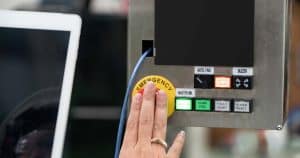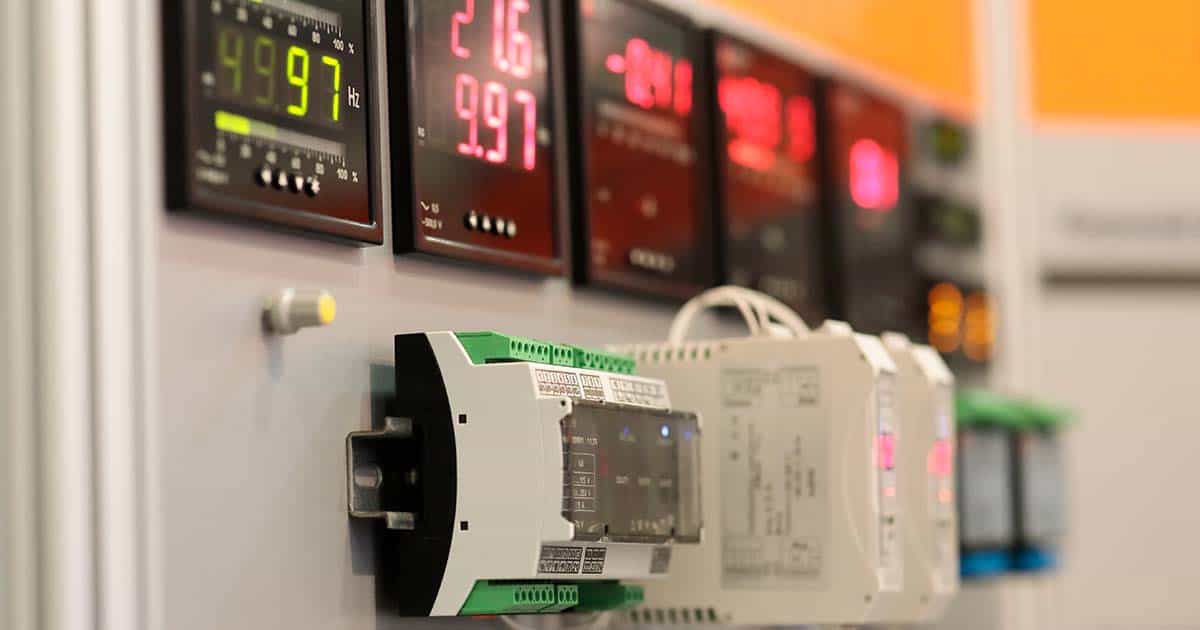Types of Control Panel Instruments
Control panels are essential components in various industrial applications, enabling operators to monitor and control critical processes. These panels are equipped with a wide range of instruments that provide real-time data on various parameters. In this comprehensive post, we will delve into the different types of control panel instruments, including analog, digital, basic, advanced, single-function, multi-function, panel meters, protective relays, and panel instruments.
Analog Panel Instruments
Analog panel instruments are the traditional and most widely recognized type of control panel instruments. They utilize mechanical or electromagnetic systems to display measurements on a dial or scale. They offer reliable and straightforward readings and are often preferred for their simplicity. Examples of analog panel instruments include voltmeters, ammeters, and wattmeters.
Analog panel instruments have been widely used for many years due to their durability and ease of use. They consist of a needle or pointer that moves across a calibrated scale to indicate the measured value. These instruments are typically designed to measure electrical parameters such as voltage, current, and power. Voltmeters measure electrical potential in volts, ammeters measure the flow of electrical current in amperes, and wattmeters measure electrical power in watts.
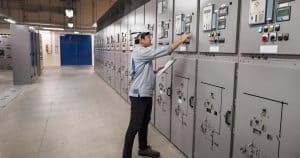
Digital Panel Instruments
Digital panel instruments have gained prominence due to their enhanced accuracy, flexibility, and advanced features. They employ digital displays, such as LED or LCD screens, to present measurements in numeric or graphical formats. Digital panel instruments offer precise readings and often include additional functionalities like data logging and communication capabilities. They include instruments like digital multimeters, process indicators, and programmable logic controllers (PLCs).
Digital panel instruments have revolutionized control panel technology by providing clear and precise numerical readings. They utilize microprocessors and digital signal processing to accurately measure and display various parameters. Digital multimeters, for example, offer high accuracy and multiple measurement capabilities, including voltage, current, resistance, and frequency. Process indicators provide real-time data on temperature, pressure and other process variables, enabling operators to monitor and control industrial processes more effectively. Programmable logic controllers (PLCs) offer advanced control and automation features, allowing for complex logic-based operations and seamless integration with other control systems.
Basic Panel Instruments
Basic panel instruments are designed to measure and display fundamental parameters such as voltage, current, and temperature. They are often single-function devices, providing dedicated readings for a specific parameter. Basic panel instruments are simple to operate, cost-effective, and suitable for applications with limited requirements.
Basic panel instruments are essential tools in control panels as they provide the foundational measurements required for process monitoring. Voltage meters, or voltmeters, measure the electrical potential difference between two points in a circuit. They are commonly used to ensure proper voltage levels and identify potential issues such as voltage drops or fluctuations. Current meters, or ammeters, measure the flow of electrical current in a circuit and help ensure that the current remains within safe operating limits. Temperature indicators, equipped with temperature sensors such as thermocouples or resistance temperature detectors (RTDs), monitor and display the temperature of a system or process, enabling operators to maintain optimal operating conditions.
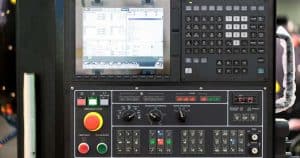
Advanced Panel Instruments
Advanced panel instruments encompass a broader range of functions and capabilities compared to basic instruments. They offer more comprehensive monitoring and control options, allowing operators to oversee multiple parameters simultaneously. Advanced panel instruments may feature touchscreens, programmability, data logging, and communication interfaces, making them suitable for complex industrial processes.
Advanced panel instruments are designed to cater to the increasing demand for advanced monitoring and control functionalities. They incorporate advanced technologies and features to enhance the efficiency and accuracy of process monitoring. These instruments often have touchscreen interfaces, enabling intuitive and user-friendly operation. Programmable options allow for customization and automation of control processes, offering greater flexibility and adaptability. Data logging capabilities enable the collection and storage of historical data for analysis and troubleshooting. Communication interfaces facilitate integration with other control systems, enabling seamless data exchange and remote monitoring.
Single Function Panel Instruments
Single-function panel instruments focus on measuring and displaying a specific parameter, such as voltage, current, or pressure. They provide precise and accurate readings for the designated parameter and are commonly used in applications where monitoring a single variable is sufficient.
Single-function panel instruments are widely used in control panels for dedicated monitoring of specific parameters. These instruments are designed to provide accurate and reliable measurements for a single variable, allowing operators to focus on critical aspects of the process. Examples of single-function panel instruments include voltage meters, current meters, pressure gauges, and flow meters.
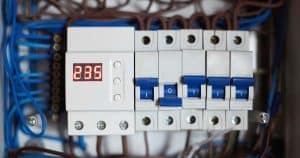
Multi-Function Panel Instruments
Multi-function panel instruments combine the capabilities of multiple single-function instruments into a single device. They offer flexibility and efficiency by measuring and displaying multiple parameters simultaneously. Multi-function panel instruments can streamline control panel designs, reduce space requirements, and provide a comprehensive overview of critical process variables.
Multi-function panel instruments are highly versatile and provide a compact solution for monitoring multiple parameters within a control panel. These instruments integrate the functionalities of various single-function instruments into a single unit, reducing the complexity and footprint of the control panel. Multi-function panel instruments often incorporate digital displays that can simultaneously show readings for different parameters such as voltage, current, temperature, and pressure. They offer convenient operation and enable operators to monitor several variables without the need for multiple individual instruments.
Panel Meters
Panel meters are versatile instruments used in control panels to measure and display various electrical and non-electrical parameters. They are available in both analog and digital formats, offering a wide range of measurement options. Some common types of panel meters include:
Voltage and Current Meters
Voltage and current meters are essential for monitoring electrical systems. Voltmeters measure electrical potential in volts, while ammeters measure the flow of electrical current in amperes. These instruments are crucial for assessing the performance and stability of electrical circuits.
Voltage and current meters, whether analog or digital, provide operators with real-time measurements of electrical parameters. They allow for the monitoring of voltage levels and current flow, ensuring that electrical systems operate within safe and optimal ranges. These meters play a vital role in detecting potential issues such as overvoltage, undervoltage, or excessive current, helping to prevent equipment damage and ensuring electrical system reliability.
Temperature Indicators
Temperature indicators, often equipped with temperature sensors, monitor and display the temperature of a system or process. They are commonly used in industrial applications where temperature control is critical, such as HVAC systems, manufacturing processes and laboratory equipment.
Temperature indicators are crucial for maintaining optimal temperature conditions within industrial processes. They provide accurate and real-time temperature measurements, allowing operators to ensure that processes operate within the desired temperature ranges. By monitoring temperature, operators can detect deviations that may indicate system malfunctions or inefficient operations, enabling timely intervention to maintain product quality and system performance.
Pressure Gauges
Pressure gauges measure and display the pressure exerted by liquids, gases, or vapors in a system. They are widely employed in industries such as oil and gas, chemical processing and manufacturing to ensure proper pressure regulation and system integrity.
Pressure gauges are essential for monitoring and controlling pressure levels in industrial processes. They provide operators with accurate pressure readings, enabling them to maintain the desired pressure conditions for safe and efficient operations. Pressure gauges play a crucial role in preventing system overpressure or under pressure situations, which can lead to equipment failure, leaks, or safety hazards.
Flow Meters
Flow meters monitor and quantify the rate of fluid flow within a system. They are utilized in applications ranging from water management to chemical processing, enabling accurate measurement and control of flow rates for optimal system performance.
Flow meters are instrumental in industries where precise measurement and control of fluid flow are necessary. They provide real-time flow rate readings, allowing operators to monitor and adjust flow conditions to meet process requirements. Flow meters assist in optimizing system efficiency, detecting flow abnormalities and ensuring proper resource allocation in various industrial processes.
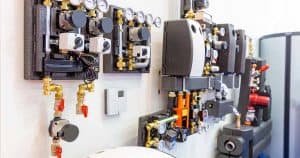
Level Indicators
Level indicators are employed to measure and display the level of liquids or solids within a container or system. They play a crucial role in industries such as water treatment, oil and gas and food processing, ensuring appropriate inventory management and preventing overflow or underflow situations.
Level indicators are essential for maintaining proper inventory levels and preventing material shortages or overflows. They provide real-time level measurements, allowing operators to monitor and control the filling or emptying processes accurately. Level indicators are used in a wide range of applications, such as storage tanks, silos, and pipelines, enabling operators to ensure efficient material handling and storage.
Process Controllers
Process controllers are advanced panel instruments used to regulate and control various parameters in industrial processes. They receive input signals from sensors or instruments and adjust output variables, such as temperature or pressure, to maintain desired process conditions. Process controllers can operate in open-loop or closed-loop configurations, offering precise control and automation capabilities.
They are key components in control panels for achieving accurate and stable process conditions. They provide closed-loop control by continuously monitoring process variables, comparing them to desired setpoints and adjusting control signals to maintain desired conditions. Process controllers are used in industries such as chemical processing, manufacturing and power generation, where precise control of temperature, pressure, flow, or other process variables is crucial.
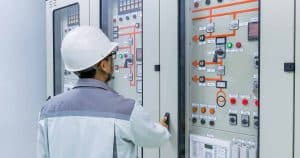
Signal Converters
Signal converters transform one type of signal into another. They are utilized to convert analog signals to digital signals or vice versa, enabling seamless integration between different instrumentations and control systems.
Signal converters facilitate signal compatibility and enable the integration of different types of control panel instruments. They convert signals from one format to another, allowing analog and digital instruments to communicate and work together effectively. Signal converters play a vital role in ensuring the compatibility and interoperability of control panel instruments, enhancing the overall functionality and performance of the control system.
Panel-Mounted Recorders
Panel-mounted recorders capture and store data over time, providing a historical record of process variables. These instruments are commonly used in applications where data analysis, trend monitoring, or regulatory compliance is essential. Panel-mounted recorders offer convenient data retrieval and analysis options.
Panel-mounted recorders are valuable tools for data logging and analysis within control panels. They capture and store data from various instruments over time, allowing operators and engineers to analyze trends, identify patterns, and make informed decisions based on historical data. Panel-mounted recorders often provide features like data visualization, trend plotting, and data export capabilities, enabling comprehensive analysis and reporting.
Protective Relays
Protective relays are specialized control panel instruments designed to safeguard electrical systems and equipment from faults, overloads, and abnormal operating conditions. They detect abnormal conditions and trigger protective actions such as circuit interruption or equipment shutdown to prevent damage or hazards.
Protective relays are critical for ensuring the safe operation of electrical systems. They continuously monitor electrical parameters and respond rapidly to abnormal conditions that could lead to equipment damage, power outages, or safety hazards. Protective relays detect faults such as overcurrent, undercurrent, overvoltage, undervoltage, and phase imbalances, activating protective mechanisms to isolate faulty circuits and prevent further damage.
Panel Instruments
Panel instruments encompass a broad category of instruments used within control panels to monitor and control various parameters. They include a wide range of instruments discussed earlier, such as analog and digital panel instruments, panel meters, process controllers, and protective relays.
Panel instruments form the backbone of control panels, providing operators with the necessary information and control capabilities. They are carefully selected and integrated to meet specific process requirements. Panel instruments include a diverse range of devices, each serving a specific purpose and contributing to the overall functionality and efficiency of the control panel.
Lascar Electronics Panel Instruments
Lascar Electronics offers a comprehensive range of high-quality panel instruments that cater to the diverse needs of industrial processes. From analog to digital instruments, single function to multi-function capabilities, Lascar Electronics provides reliable, accurate, and advanced solutions for effective monitoring and control. Lascar’s instruments are designed to enhance efficiency, accuracy, and reliability in your control panel. Explore Lascar Electronics’ product catalog and consult with their knowledgeable team to discover the ideal panel instruments for your specific application. Upgrade your control panel instruments today and experience the difference in performance and precision.
Control panels serve as the nerve centers of industrial processes, and the selection of appropriate instruments is crucial for efficient monitoring and control. Understanding the different types of control panel instruments, ranging from analog to digital, basic to advanced, and single-function to multi-function, enables engineers and operators to make informed decisions when designing control systems. By leveraging the capabilities of these instruments, industries can enhance their operational efficiency, maintain safety standards, and optimize their processes for increased productivity.
